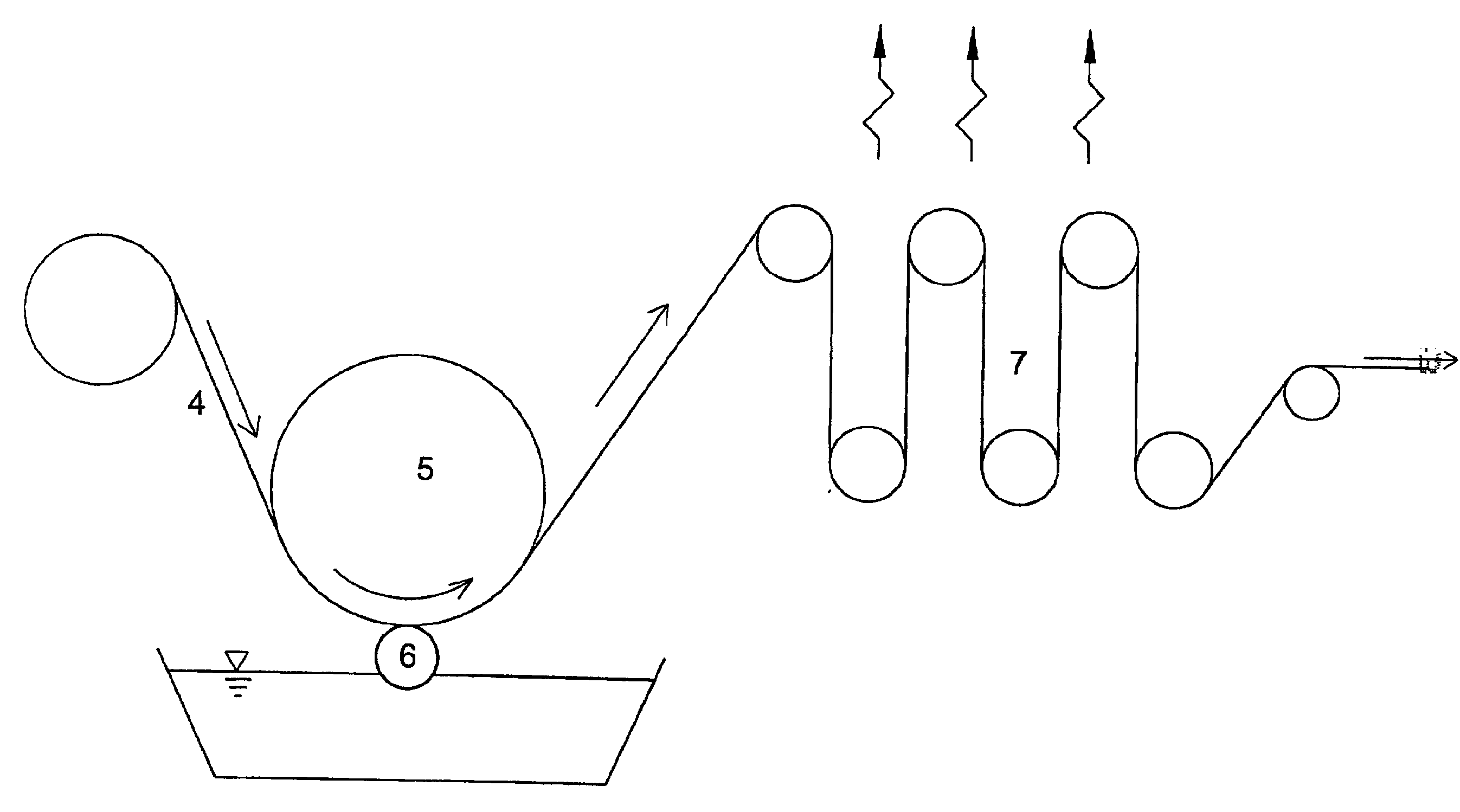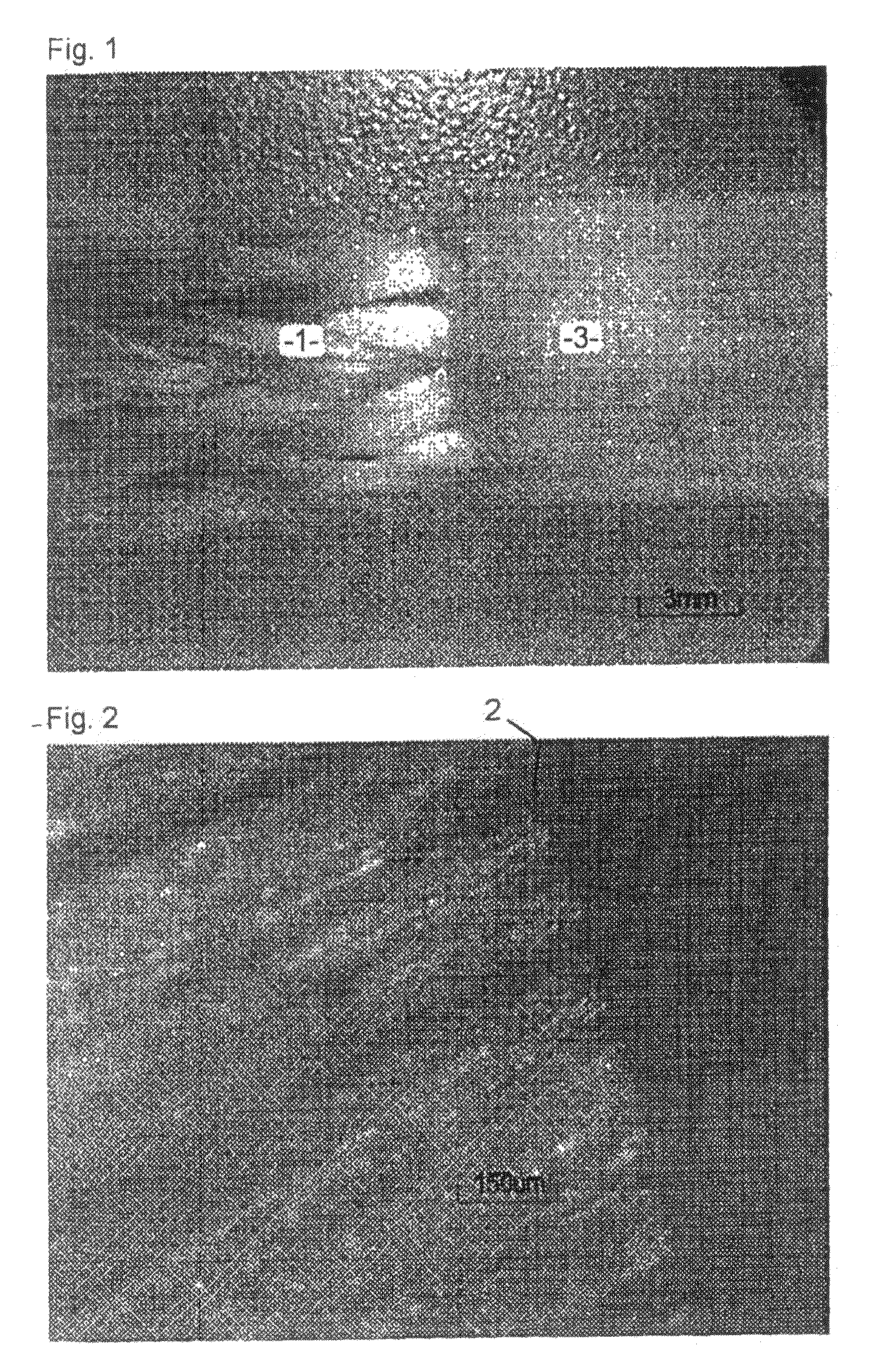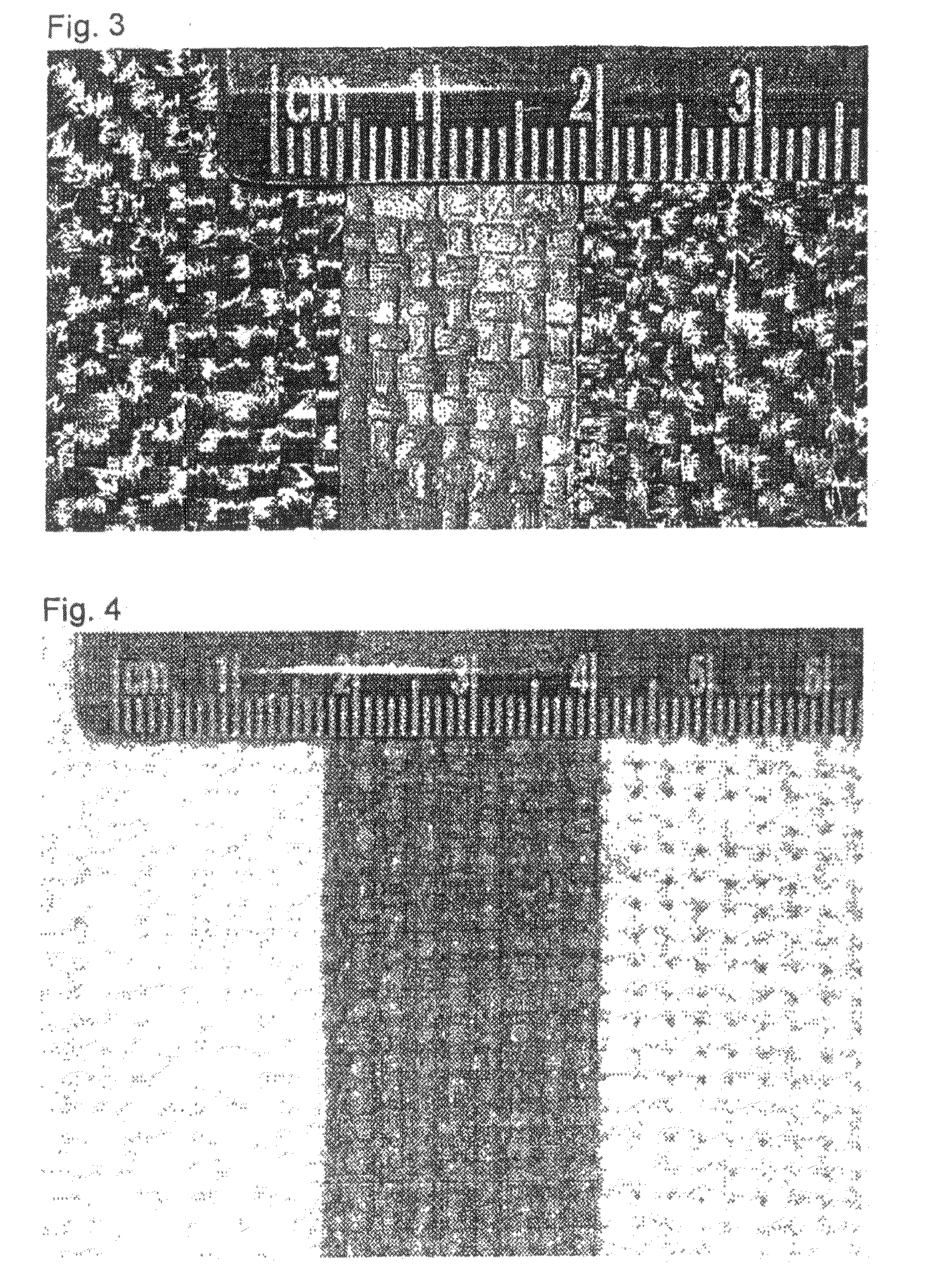[0012]It is an object of one aspect of this invention to provide high strength connections between various fiber-reinforced structural components. For example, the interior of an aircraft
fuselage structure might be provided with a generally circular zone of exposed fibers for the purpose of being adhesively bonded to a pressure bulkhead with its
fuselage-fitting perimeter featuring similarly exposed fibers. Upon bonding, fibers continuous from within the
fuselage structure are commingled and co-embedded in cured adhesive with fibers continuous from within the pressure bulkhead structure. The integrity of the combined structure is thus enhanced by continuity of fiber across the adhesive-to-cured-resin interfaces and thus does not rely on the strength of the adhesive-to-cured-resin bonds and also does not rely on the strength of un-reinforced adhesive. Loads may be reliably transferred from fiber to resin to fiber without the requirement for tensile load transfer across adhesive bond lines. Stresses within the adhesive itself are also reduced in accordance with the degree of fiber overlap achieved within the adhesive.
Fiber overlap may be tailored to load requirements. For example, opposing electro-statically flocked bonding strips might be used in order to maximize the proportion of Z-axis fiber alignment within the joint. Connections with predominately shear loads might be adequately provided with partial
exposure of woven reinforcing fabrics. Knitted fabrics would be expected to provide joint properties intermediate to those provided by flocked bonding strips and square
woven fabric.
[0014]It is an object of a further aspect of this invention to provide a high strength, yet flexible, connection between several structural components. For example, the bonding of two relatively stiff structures which may move relative to each other may require a flexible joint in order to reduce joint loads to within safe limits. A
landing gear or engine attachment to a fuselage might fall into this category. Provision, in accordance with this invention, of exposed fiber at the surfaces of the parts to be connected allows the creation of an elastomeric joint between otherwise relatively rigid structures. Integration of the exposed fibers of each structure into such an elastomeric joint provides not only joint attachment reliability but also the possibility of carrying substantial tensile loads through such a joint. Elastomeric connections of prior art have primarily used elastomeric elements in compression. In cases where loads reverse direction, redundant elastomeric elements have been required, with only one or the other elastomeric element carrying a load at any one time.
[0018]According to one aspect of an embodiment of the present invention, a zone of thermal gradient may be established normal to a desired boundary between resin impregnated fiber and non-resin impregnated fiber. A molten resin blocking substance such as paraffin may be supplied to the reinforcing fibers near the higher temperature end of the thermal gradient zone. The resin blocking substance, such as paraffin, will wet the heated fibers and follow the fibers by
capillary action to a boundary where the temperature of the fiber causes solidification of the paraffin and cessation of capillary transport. Subsequent resin infusion of the portion of fiber not infused with paraffin results in a distinct resin boundary within the
fiber matrix. Curing of the resin may be carried out at temperatures below the
melting point of the resin blocking substance such as paraffin. After the resin is cured, the paraffin may be removed by
vacuum sublimation followed by solution in
citric acid solution, for example. This sequence leaves exposed non-resin infused fibers which may be readily incorporated into a secondary joint. For example, the marginal edges of two adjoining parts may be joined by overlapping or otherwise
interlocking the exposed fibers of each part followed by resin infusion of the zone of interlocked fibers. The resulting structure benefits from continuity of reinforcement through the joint.
[0021]According to a further aspect of this invention a soluble flexible sheet may anchor short lengths of fiber oriented primarily normal to the plane of the elastomeric sheet. Such a sheet may be applied to the surface of an uncured
composite structure and left in place during curing. Subsequent to curing, the flexible sheet may be dissolved, leaving exposed fibers protruding from the surface of the cured
composite structure.
[0029]In accordance with one aspect of a further embodiment of this invention, a joint may be provided in which one or more components are match molded to each other. For example, a laminate or sandwich structure may be built to include one or more surface zones wherein the outer fibers are protected by a resin blocking substance. Either before or after curing of such a structure, additional structures may be built thereon which incorporate corresponding zones of resin blocked fiber in a back-to-back configuration with resin blocked fiber elements of the first structure. Upon curing of such assembled structures in their respective assembled positions, the structures may be disassembled from each other and their respective bonding zones cleaned of resin blocking substance. Such disassembly may be useful or required for the removal of mandrels or the
insertion of other components, for example. After removal of resin blocking substance, the structures may subsequently be reassembled and adhesively bonded to each other with an assured fit.
[0033]In accordance with a further embodiment of one aspect of the present invention, a thermal gradient may be used to control the extent of infusion of a
thermoplastic into a
fiber matrix. Subsequent infusion of thermoset resin into the remainder of the
fiber matrix can then be used to yield a part which may be thermally bonded to another such part with continuity of fiber reinforcement across the resin interfaces. This method combines the high
glass transition temperature and favorable structural properties of thermoset resins with the
weldability of
thermoplastic parts.
 Login to View More
Login to View More 


